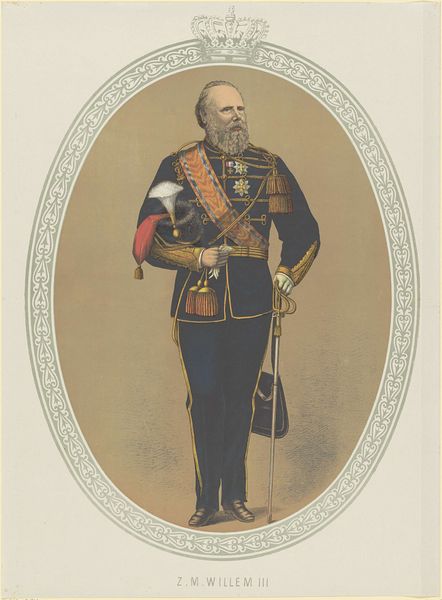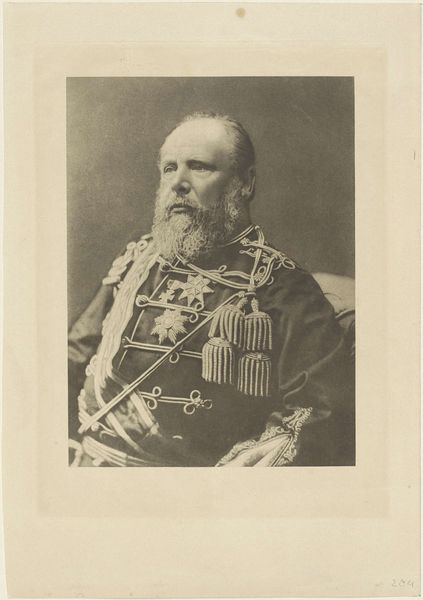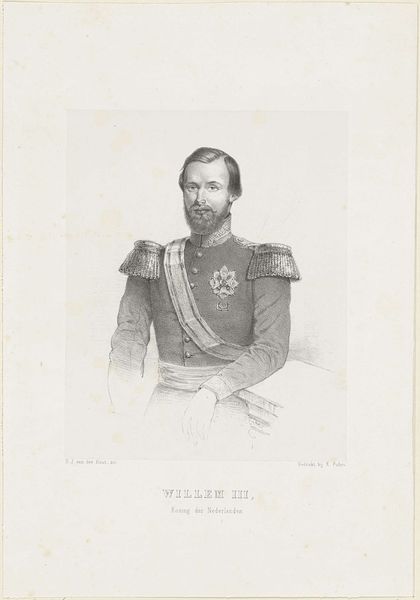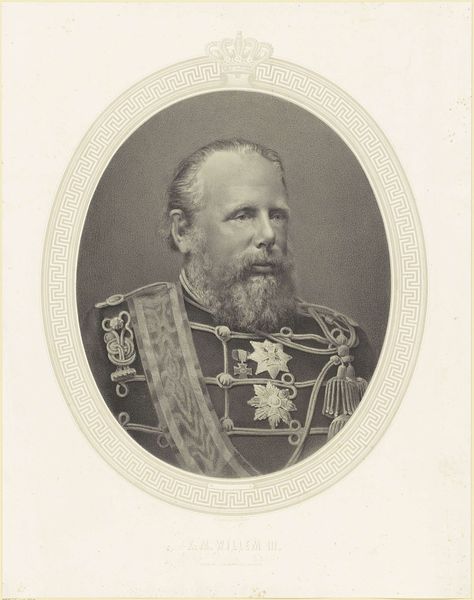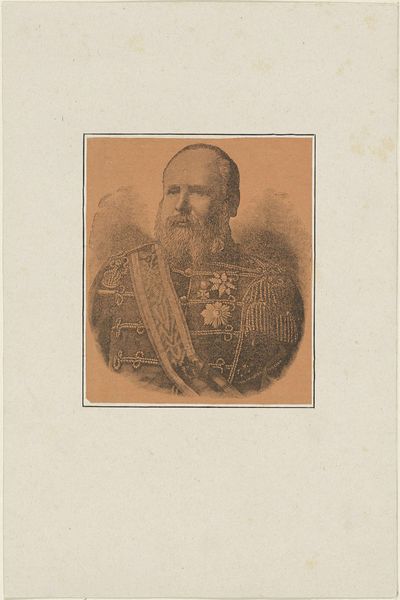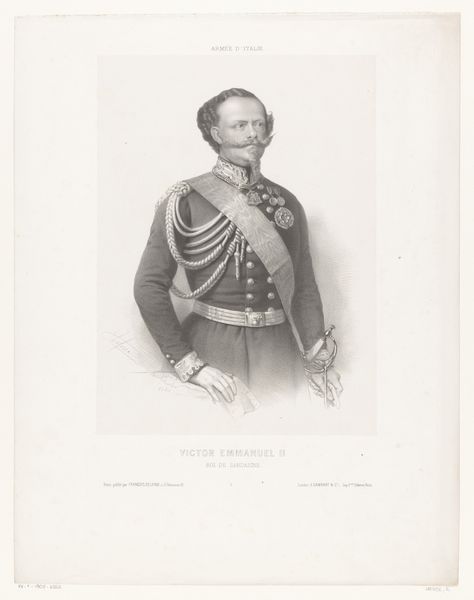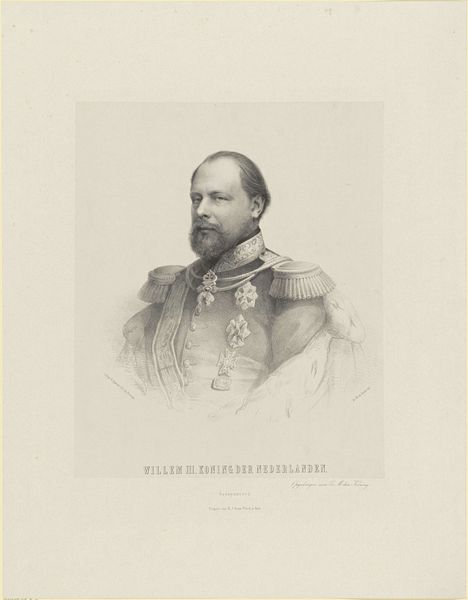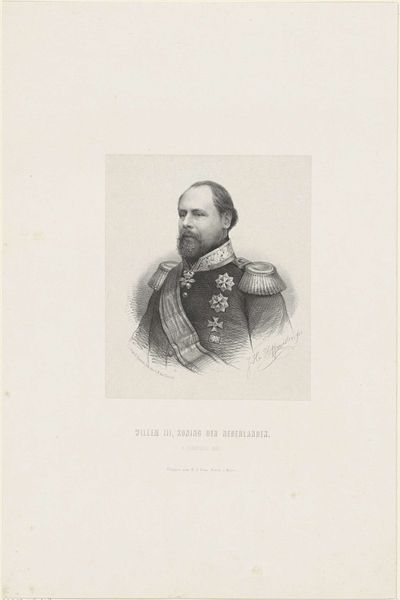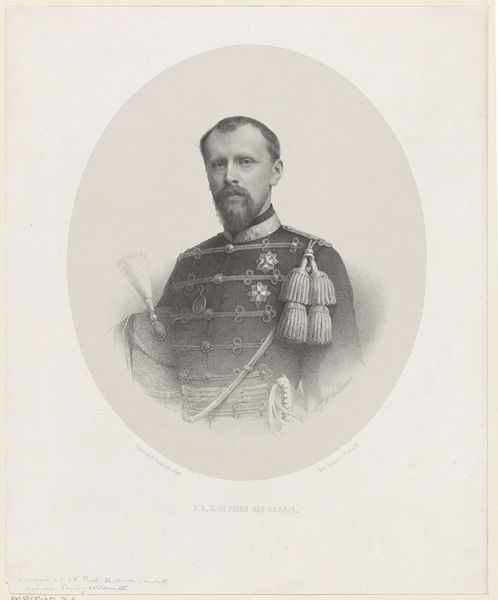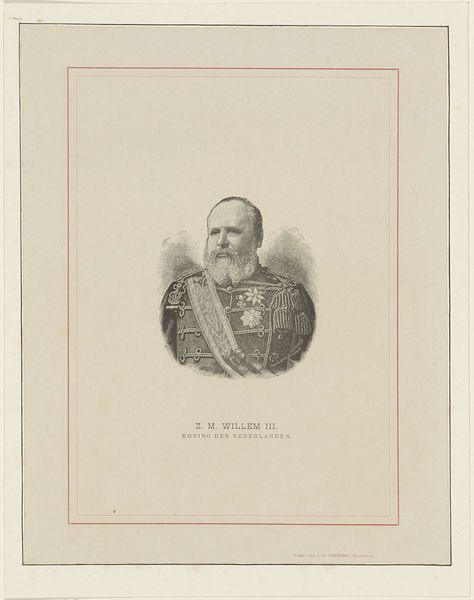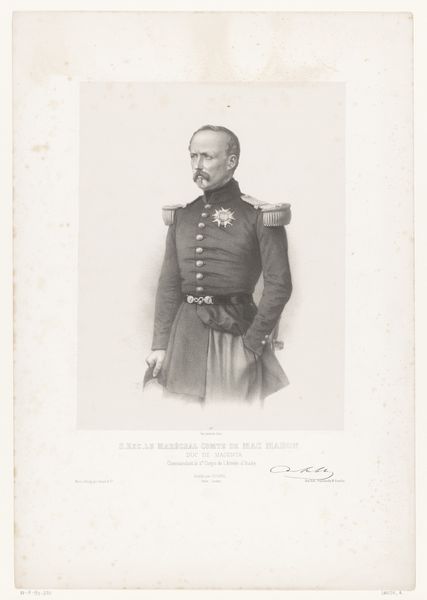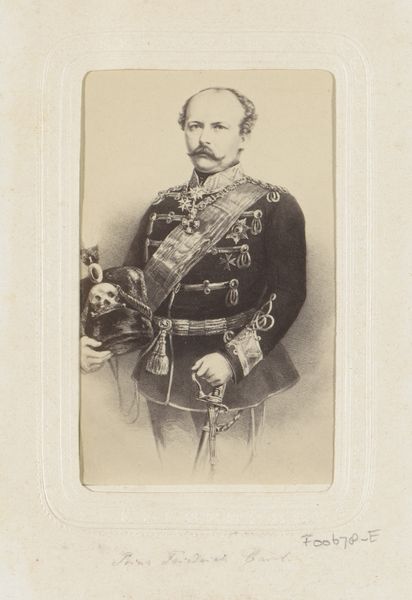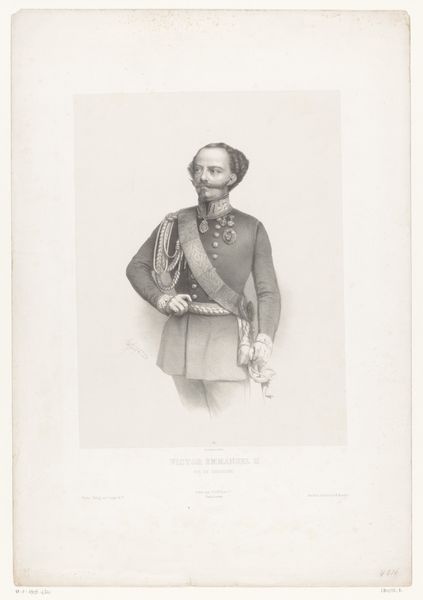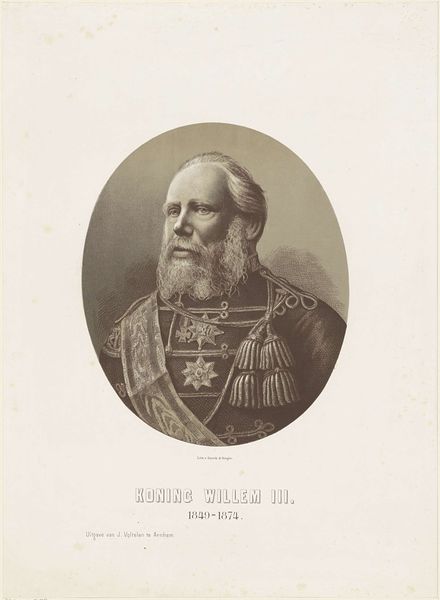
Dimensions: height 505 mm, width 347 mm
Copyright: Rijks Museum: Open Domain
Editor: Here we have Willem Bernardus IJzerdraat's "Portrait of Willem III, King of the Netherlands" from 1891, a lithograph held here at the Rijksmuseum. The subject appears very stern and formal in his military attire. How do we interpret a portrait like this through a historical lens? Curator: Considering it was made towards the end of his reign, it reflects the complex social and political climate. This image isn’t just a depiction of Willem III, it's a carefully constructed presentation of power intended for public consumption. The lithograph as a medium democratized imagery, making the king’s image accessible to a broader audience. Notice his uniform and the regalia; what do those elements communicate, do you think? Editor: They project authority, right? Military strength and the divine right of kings, perhaps? But doesn't the almost mass-produced nature of the lithograph contradict that sense of elite power? Curator: Exactly! That's where the tension lies. While mass production made it accessible, its artistic qualities and framing sought to elevate Willem III to the same stature as royal portraits of previous eras. We see an effort to maintain traditional hierarchies in a changing world. Think about how the portrait was displayed. Where might it have been found and who was intended to see it? Editor: Maybe in government buildings, schools? To instill a sense of national pride and respect for the monarchy? Curator: Precisely. So it functions as propaganda, in a sense, reinforcing existing power structures. The intent wasn’t just artistic expression; it was nation-building through imagery. Consider its historical impact – how did images like this shape the perception of the monarchy at that time, or even influence the art of portraiture? Editor: That’s really interesting. I hadn't thought about how deeply intertwined art, politics, and even printing technology were in shaping public perception. Curator: And that's the power of historical context. Examining art through social and political history unveils how imagery actively shapes and reinforces ideologies.
Comments
No comments
Be the first to comment and join the conversation on the ultimate creative platform.
